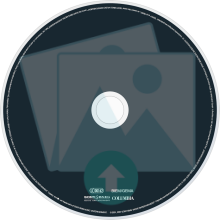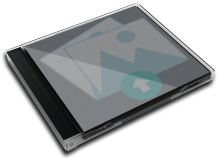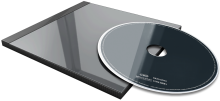Track List
01) Countdown
02) Eleven Four
03) Why Phillis Waltz
04) Someday My Prince Will Come
05) Castilian Blues
06) Castilian Drums
07) Fast Life
08) Waltz Limp
09) Three's a Crowd
10) Danse Duet
11) Back to Earth
12) Fatha
01) Countdown
02) Eleven Four
03) Why Phillis Waltz
04) Someday My Prince Will Come
05) Castilian Blues
06) Castilian Drums
07) Fast Life
08) Waltz Limp
09) Three's a Crowd
10) Danse Duet
11) Back to Earth
12) Fatha
2:25
2:53
2:18
6:20
2:32
5:20
2:59
4:16
2:44
3:47
3:20
3:47
Data Complete 80%
Total Rating
Total Rating
![]() (1 users)
(1 users)
Back Cover![]()
CD Art
3D Case
3D Thumb
3D Flat
3D Face
3D Spine
First Released
![]() 1962
1962
![]() Jazz
Jazz
![]() Happy
Happy
![]() Jazz
Jazz
![]() ---
---
![]() Medium
Medium
![]() Album
Album
![]() 0 copies
0 copies
Album Description
Available in:
Countdown—Time in Outer Space is a studio album released by the Dave Brubeck Quartet in 1962 on Columbia LP record CS 8575 (stereo) and CL 1775 (mono). The front cover features the painting Orange and Black Wall by Franz Kline. In Australia the album appeared on the Coronet label. It was re-released, for the first time in digital format, in 2004 as part of a compact disc collection titled Dave Brubeck: For All Time. It was again released as part of the box set The Dave Brubeck Quartet: the Columbia Studio Albums Collection 1955-1966. Both CD re-releases feature a bonus track titled "Fatha".
Dedicated to Lt. Col. John H. Glenn, the album was another in a series of concept albums studying the exploration of unusual meters and polytonality within a jazz context. Recorded between May 3, 1961 and February 12, 1962, it was put on tape in many of the same sessions that appear on Time Further Out. Brubeck encouraged the quartet members towards development of new time signatures for this album. The first track, Countdown, is based on a typical "8 to the bar" boogie, stride piano in the manner of Earl Hines or Teddy Wilson, but with two extra notes added in, giving a meter count of 10. AC/DC's song Whole Lotta Rosie has an opening riff directly mimicking this track. Michael Katzif considers the track so smoothly played that some people may be unaware of the unusual time signature. "Eleven Four" uses a pattern of five beats, then two sets of three to create the feel of eleven. In the track "Why Phillis" some players stick to 3/4 time, others adhere to 4/4, while others move between the time signatures. "Someday My Prince Will Come" had been previously recorded by the Quartet before, juxtaposing triple and quadruple meters in the album Dave Digs Disney, but the track was re-done on this album to further realize the rhythmic possibilities of poly-rhythm, including adding a rhythm of 2/4 to the mix. "Castilian Blues" and "Castilian Drums" have time signatures of 5/4, the latter being unsurprisingly a percussion showpiece. The next four tracks, "Fast Life," "Waltz Limp," "Three's a Crowd," and "Danse Duet" were written for a ballet entitled "Maiden in the Tower." Different characters in the performance have themes with different time signatures, and as they interact the interplay and contrasts of the various rhythms are paraded. The album's final track, as originally issued, is a standard blues in 4/4 time, hence the title "Back to Earth."

User Album Review
None...
External Album Reviews
None...
User Comments


Available in:
Countdown—Time in Outer Space is a studio album released by the Dave Brubeck Quartet in 1962 on Columbia LP record CS 8575 (stereo) and CL 1775 (mono). The front cover features the painting Orange and Black Wall by Franz Kline. In Australia the album appeared on the Coronet label. It was re-released, for the first time in digital format, in 2004 as part of a compact disc collection titled Dave Brubeck: For All Time. It was again released as part of the box set The Dave Brubeck Quartet: the Columbia Studio Albums Collection 1955-1966. Both CD re-releases feature a bonus track titled "Fatha".
Dedicated to Lt. Col. John H. Glenn, the album was another in a series of concept albums studying the exploration of unusual meters and polytonality within a jazz context. Recorded between May 3, 1961 and February 12, 1962, it was put on tape in many of the same sessions that appear on Time Further Out. Brubeck encouraged the quartet members towards development of new time signatures for this album. The first track, Countdown, is based on a typical "8 to the bar" boogie, stride piano in the manner of Earl Hines or Teddy Wilson, but with two extra notes added in, giving a meter count of 10. AC/DC's song Whole Lotta Rosie has an opening riff directly mimicking this track. Michael Katzif considers the track so smoothly played that some people may be unaware of the unusual time signature. "Eleven Four" uses a pattern of five beats, then two sets of three to create the feel of eleven. In the track "Why Phillis" some players stick to 3/4 time, others adhere to 4/4, while others move between the time signatures. "Someday My Prince Will Come" had been previously recorded by the Quartet before, juxtaposing triple and quadruple meters in the album Dave Digs Disney, but the track was re-done on this album to further realize the rhythmic possibilities of poly-rhythm, including adding a rhythm of 2/4 to the mix. "Castilian Blues" and "Castilian Drums" have time signatures of 5/4, the latter being unsurprisingly a percussion showpiece. The next four tracks, "Fast Life," "Waltz Limp," "Three's a Crowd," and "Danse Duet" were written for a ballet entitled "Maiden in the Tower." Different characters in the performance have themes with different time signatures, and as they interact the interplay and contrasts of the various rhythms are paraded. The album's final track, as originally issued, is a standard blues in 4/4 time, hence the title "Back to Earth."
User Album Review
None...
External Album Reviews
None...
User Comments

No comments yet...


